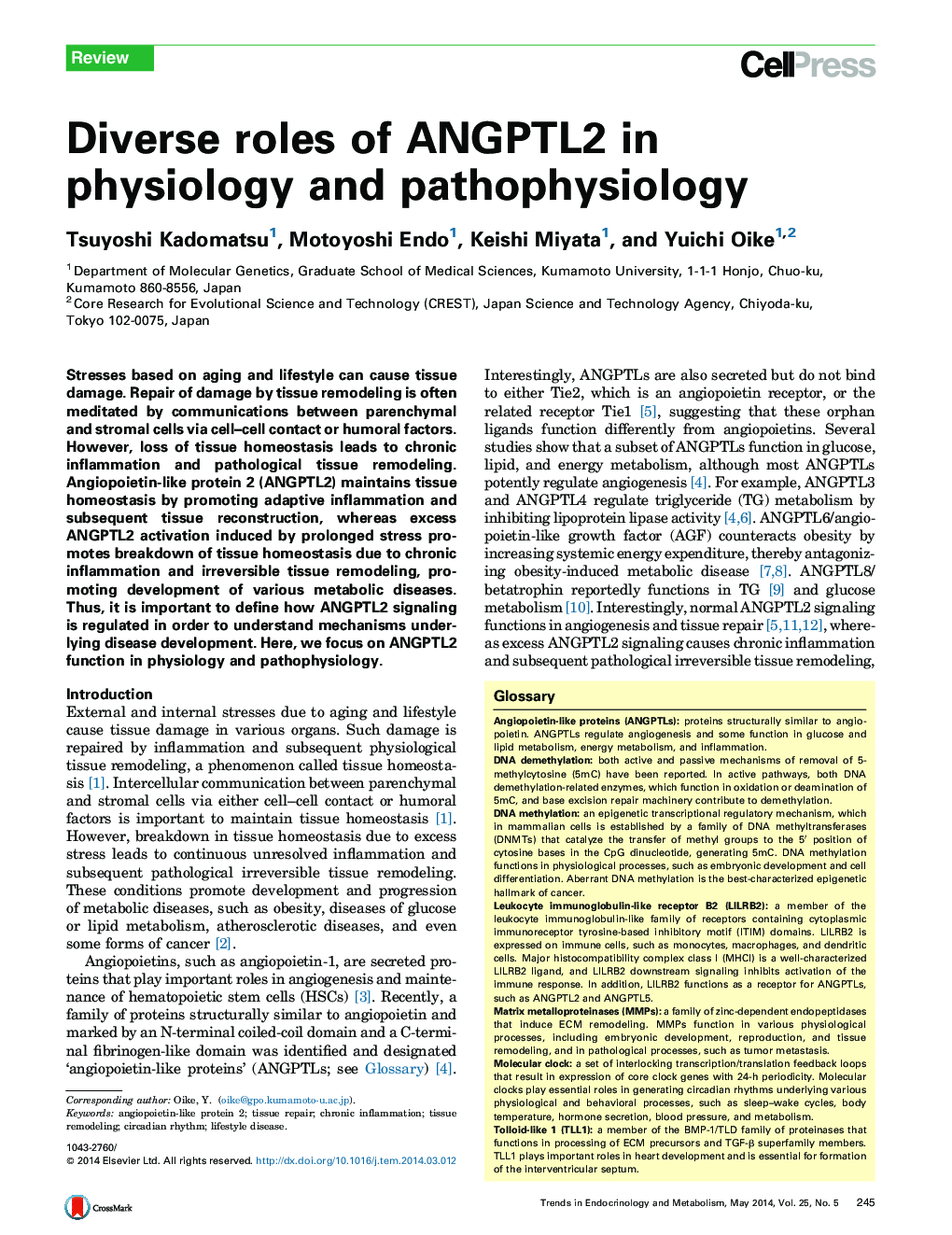| Article ID | Journal | Published Year | Pages | File Type |
|---|---|---|---|---|
| 2810427 | Trends in Endocrinology & Metabolism | 2014 | 10 Pages |
•Tissue damage is repaired by inflammation and subsequent physiological tissue remodeling, a phenomenon called tissue homeostasis.•ANGPTL2 maintains tissue homeostasis by promoting adaptive inflammation and subsequent tissue reconstruction.•Excess ANGPTL2 signaling causes chronic inflammation and irreversible tissue remodeling, promoting development of lifestyle diseases.•Blocking excess ANGPTL2 signaling could represent novel and effective therapeutic strategies against lifestyle diseases.
Stresses based on aging and lifestyle can cause tissue damage. Repair of damage by tissue remodeling is often meditated by communications between parenchymal and stromal cells via cell–cell contact or humoral factors. However, loss of tissue homeostasis leads to chronic inflammation and pathological tissue remodeling. Angiopoietin-like protein 2 (ANGPTL2) maintains tissue homeostasis by promoting adaptive inflammation and subsequent tissue reconstruction, whereas excess ANGPTL2 activation induced by prolonged stress promotes breakdown of tissue homeostasis due to chronic inflammation and irreversible tissue remodeling, promoting development of various metabolic diseases. Thus, it is important to define how ANGPTL2 signaling is regulated in order to understand mechanisms underlying disease development. Here, we focus on ANGPTL2 function in physiology and pathophysiology.
